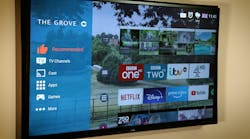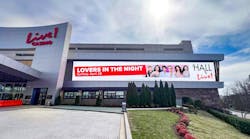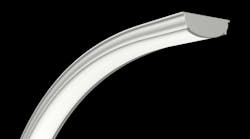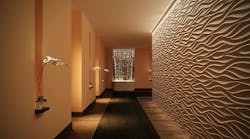Date Announced: 20 Jan 2012 The increasing cost of energy and maintenance, together with more stringent legal regulation in respect of climate protection, such as the European Directive 2009/125/EC "Eco-design Requirements for Energy-related Products" (ErP), are galvanising many community consumers in Germany and Europe into action, thus obliging them to renew their lighting installations, which often date back as far as the 1960s. For, because of the minimum energy efficiency requirements for light sources, lamps and control units laid down in the key regulation (EC) No. 245/2009, the inefficient mercury vapour lamps that were usual at the time will be outlawed in street lighting as from 2015. There are already a large number of energy-efficient alternatives available, whose design will, at the same time, enhance any modern urban landscape. These will be exhibited at Light+Building by manufacturers from all over the world. The world's leading trade fair for architecture and technology – a unique platform for innovations in energy-efficient products and systems - will open its doors from 15 to 20 April 2012 in Frankfurt am Main. At the world's largest trade fair for lighting and intelligent building services technology some 2,100 exhibitors will be presenting their innovations in the field of lighting, electrical and electronic engineering, home and building automation and software for the building industry over a surface area of 240,000 square metres – many of the innovations being shown for the first time in the world. Even though, given the constant improvement in light yield, LED technology is clearly set to determine the future of street lighting, this does not mean that optimisation is currently synonymous with replacing all lamps with LED light sources. Progress in the development of conventional lighting and control components has led to interesting and energy-efficient systems, which, depending on the way they are used in parks, in local and residential streets, collector roads or main freeways have often shown themselves to be more cost-effective. So, for instance, in street lighting with halogen metal vapour lamps, reduction in energy consumption – and hence considerable savings in terms of cost – can be achieved by fitting intelligent control systems to existing equipment with various regulatory modes. When linked to telemanagement systems, controlled by time switches and/or light sensors and/or with a pre-set dimming pattern, the level of illumination can simply be reduced at times when there is little traffic.LED street lamps can reduce light pollution because of their directional radiation pattern. With a traditional design – mounted on the side of or on top of the lamp post, or suspended from it – they can blend harmoniously into any modern townscape. LED technology is, however, just as much an inspiration for the creation of unusual and eye-catching shapes and designs. White light of uniform quality, luminosity and intensity on the one hand ensures that towns and cities enjoy an inviting atmosphere but, on the other, also makes them safer for traffic. At the same time, LEDs bring significant energy savings; when compared to the operation of traditional luminaires and combined with suitable lighting control systems, energy consumption – and thus the associated energy costs – can be reduced by up to 80 per cent. At the same time, LED light sources are very durable, so that they minimise the time and cost involved in maintenance and replacement. But lighting manufacturers are making efforts to keep well abreast of the rapid pace of development in LED technology. Lighting modules are already being designed as exchangeable units, so that the next and more efficient generation of LEDs can be put in place easily and simply. This means that municipal authorities have further possible ways in which to keep down operating costs – to their advantage. In times of scarce financial resources, the requirement to renew lighting equipment poses a real challenge for local councils. Grants and contracting schemes – i.e. financing new installations with the energy saved through deals with manufacturers, building contractors or energy suppliers – can provide some relief for council budgets. With its broad spectrum of innovative lamps, light sources and control components for contemporary and energy-efficient street lighting, Light + Building 2012 in Frankfurt am Main from 15 to 20 April is set to provide an ideal platform for information on which to base decisions. Solutions for all budgets point the way towards greater climate protection as well as attractive towns and cities that remain a pleasure to live in.Background information on Messe FrankfurtMesse Frankfurt is Germany’s leading trade fair organiser with € 457* million in sales and 1,769* employees worldwide. The Messe Frankfurt Group has a global network of 28 subsidiaries, five branch offices and 52 international Sales Partners, giving it a presence for its customers in more than 150 countries. Events ‘made by Messe Frankfurt’ take place at more than 30 locations around the globe. In 2011, Messe Frankfurt organised 101 trade fairs, of which more than half took place outside Germany.Messe Frankfurt’s exhibition grounds, featuring 578,000 square metres, are currently home to ten exhibition halls and an adjacent Congress Centre. The company is publicly owned, with the City of Frankfurt holding 60 percent and the State of Hesse 40 percent. For more information, please visit our website at: www.messefrankfurt.com
Contact
Light+Building 2012
E-mail:[email protected]
Web Site:www.light-building.com




